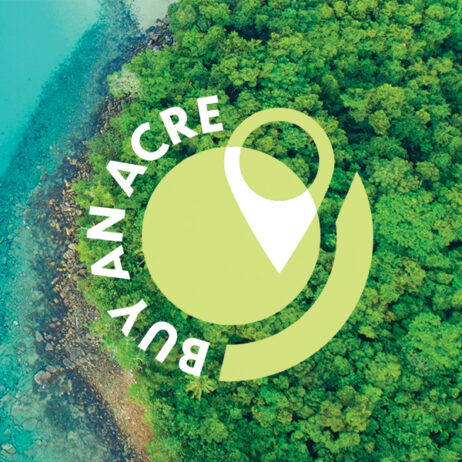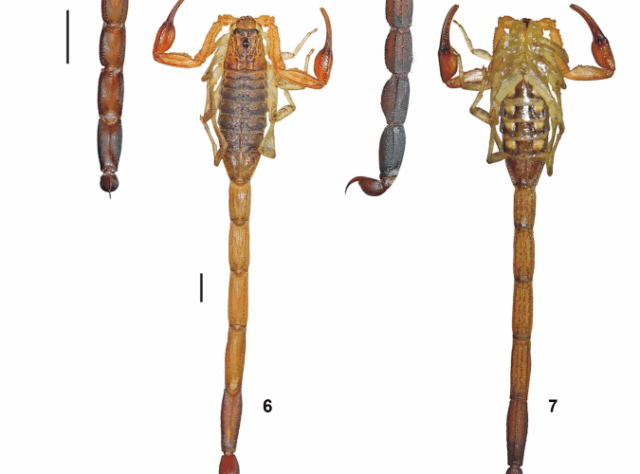
Detailed photos showing the new species of scorpion, discovered in western Honduras in 2025. Image taken from Luis F. de Armas & Alex M. Cubas-Rodríguez (2025). Credit: Luis F. de Armas & Alex M. Cubas-Rodríguez
A hidden species, now revealed
A species of scorpion new to science has been discovered by our partner Asociación Ecológica de San Marcos de Ocotepeque (AESMO) in western Honduras – an exciting contribution to our understanding of biodiversity in these precious cloud forests.
The finding was made during a community patrol through the Pacayita Volcano Biological Reserve, bringing together residents from the nearby villages of El Cutal and El Suyatal.
Alex Cubas-Rodríguez, the Protected Areas Coordinator of AESMO, reflects on the morning, “The expedition was not only ours. From El Cutal and El Suyatal, familiar faces arrived: children with curious eyes, with backpacks full of water and bread, grandparents with stories of the mountain, and young people with the hope of being part of something big. All proud members of the Lenca people, united by a simple but vital goal: to seek life”.
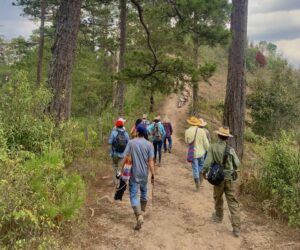
The new species of scorpion was discovered during a community patrol in the Pacayita Volcano Biological Reserve. These patrols are a key part of AESMO’s innovate collaborative conservation model, where rangers and communities work together to protect Honduras’ threatened cloud forests. Credit: AESMO
The new species of scorpion, pale brownish in colour and just four centimetres long, could easily have gone unnoticed. To the casual observer, this tiny scorpion appears little different from its relatives scuttling through the leaf litter, bark, and stones of the forest floor. But DNA analysis revealed that it is in fact unique. The formal identification was made by both Alex and Dr. Luis F. de Armas – one of the world’s leading scorpion experts. But it is to the local people that Alex feels the discovery really belongs.
He says, “We named it Centruroides lenca in honour of the Indigenous Lenca people, their history and their territory. We shared this without fanfare, applause, or speeches. But there was a quiet pride and warmth, even tears, together recognising that something important had happened”.
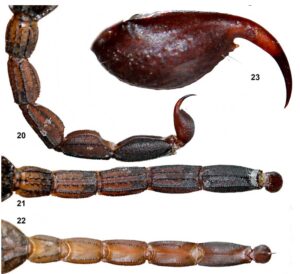
Up close: The identification of the new species required detailed analysis of all aspects of the scorpions’ body form or ‘morphology’. Image taken from Luis F. de Armas & Alex M. Cubas-Rodríguez (2025). Credit: Luis F. de Armas & Alex M. Cubas-Rodríguez
A testament to community-led conservation
This discovery not only strengthens the case for the ongoing protection of the Pacayita Volcano Biological Reserve, supported by WLT, but also underscores the vital importance of conservation driven by local knowledge and leadership.
Alex emphasises this point “Science does not have to be alone. It doesn’t have to be distant or cold. Conservation can and should be born from the social, from the living roots of the communities that love and protect their environment. This, to me, is a powerful example of what happens when knowledge meets culture, when mutual respect creates bridges between worlds that, for too long, have been separate.”
A day of discoveries
The identification of Centruroides lenca wasn’t the only major contribution to scorpion research made that day, with the community patrol also revealing the first ever presence of another scorpion species, C. tapachulaensis, within Honduras.
This is the southernmost recorded locality of this species, having previously only been known from the Pacific slope of Mexico and Guatemala.
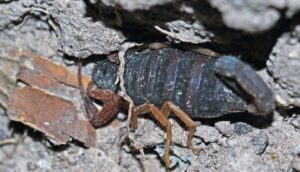
A juvenile Centruroides tapachulaensis seen for the first time within Honduras. Image taken from Luis F. de Armas & Alex M. Cubas-Rodríguez (2025). Credit: Luis F. de Armas & Alex M. Cubas-Rodríguez
A growing picture
Back in 2002, just five species of Centruroides scorpion were known to exist within Honduras but now, studies including this one, have brought the number up to 12. This shows how diverse the cloud forests of Honduras are and how much is still waiting to be known. It also highlights what can be achieved when local knowledge, science, and shared purpose come together.
For an in-depth read into the discovery of this species, click here. And to find out more about our efforts to protect the world’s most threatened habitats – including the Pacayita Volcano Biological Reserve – click here.
